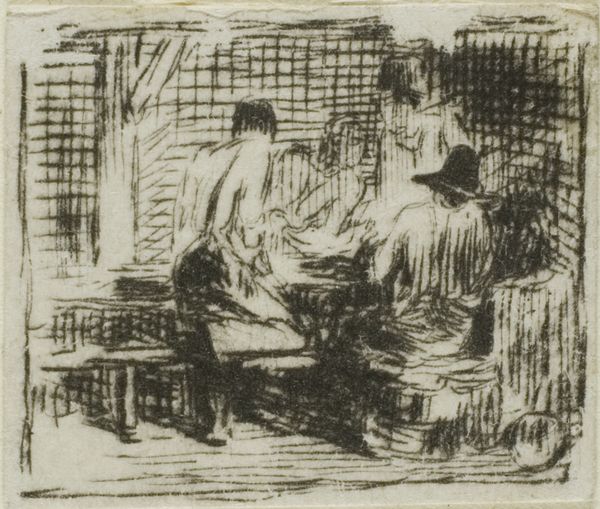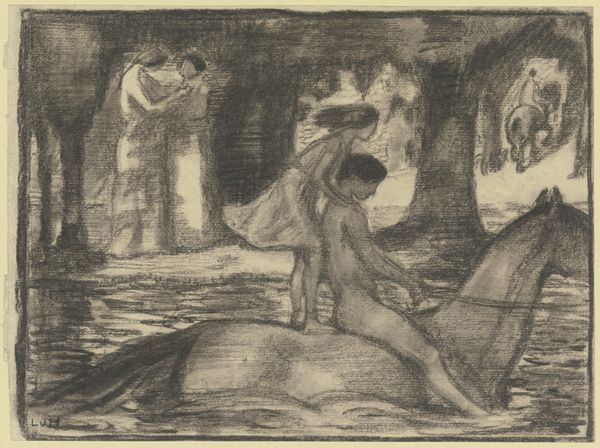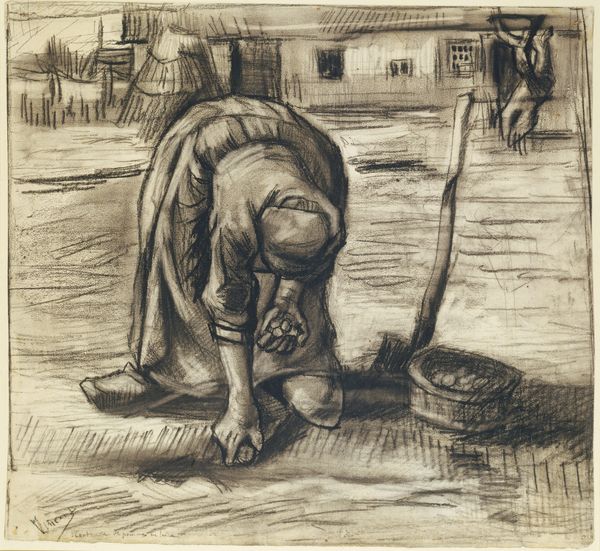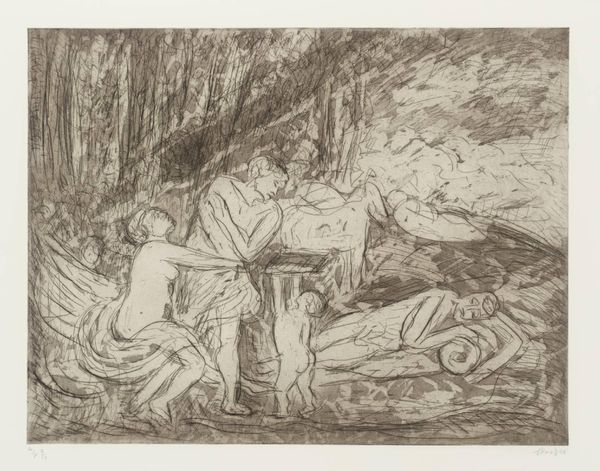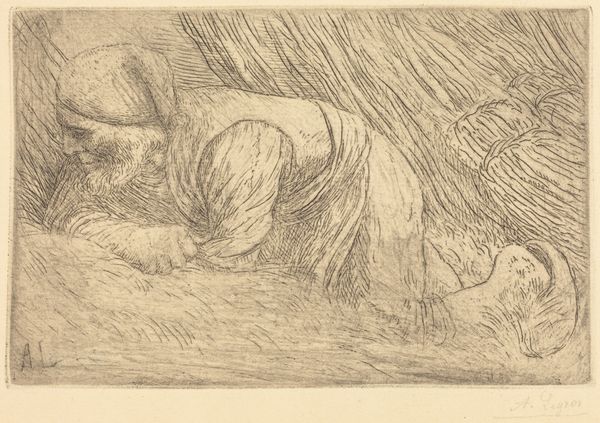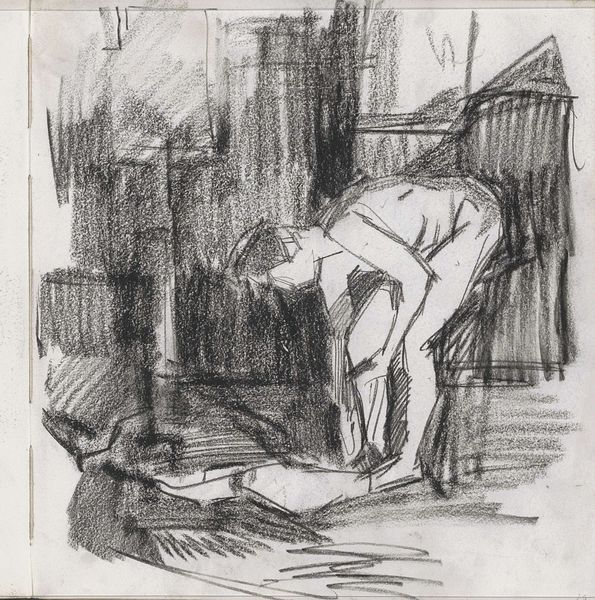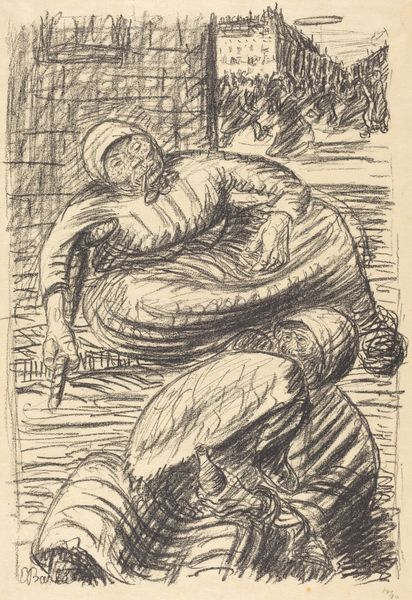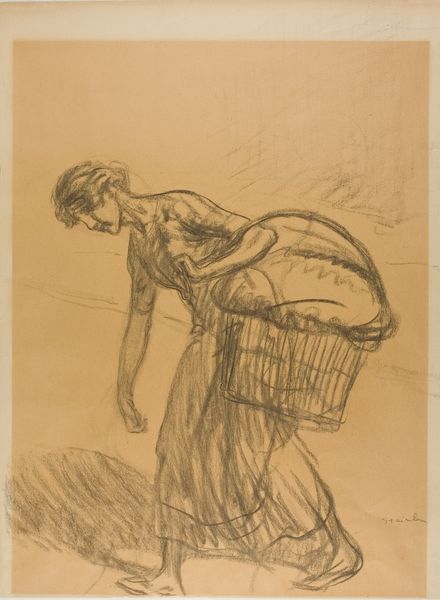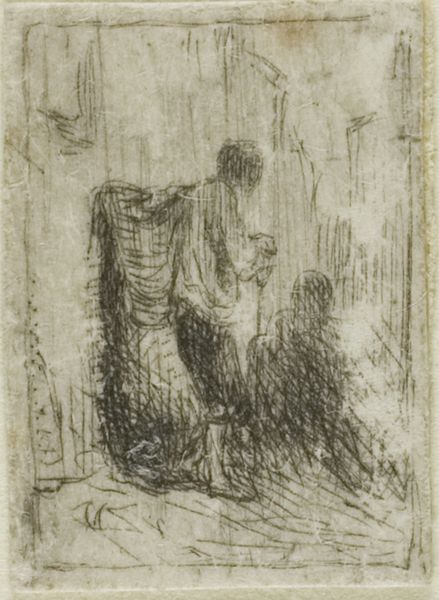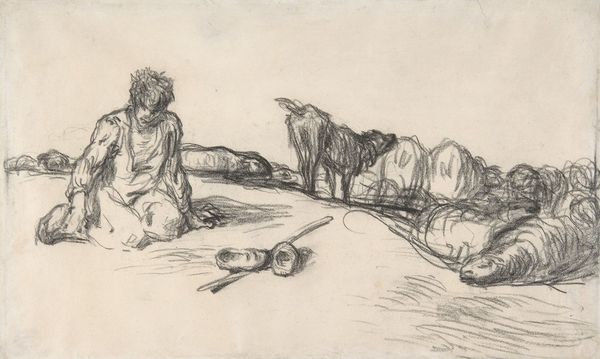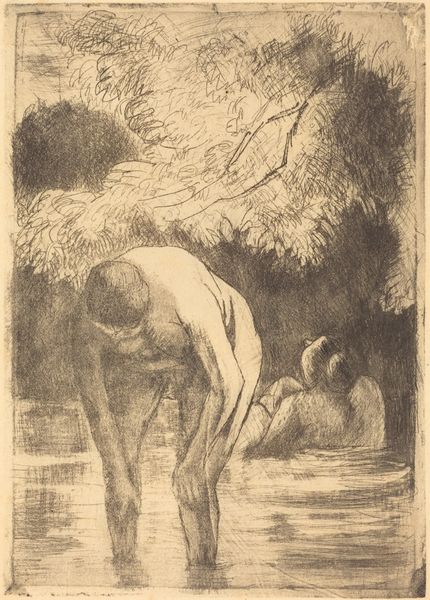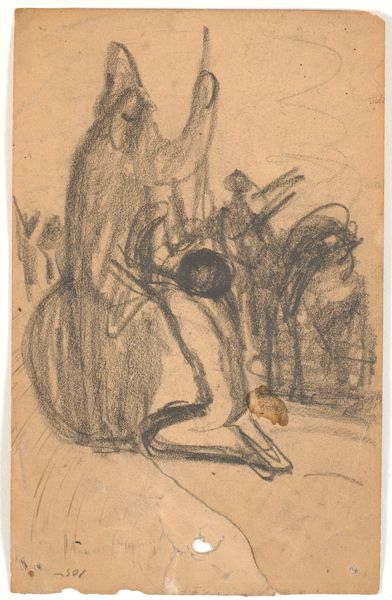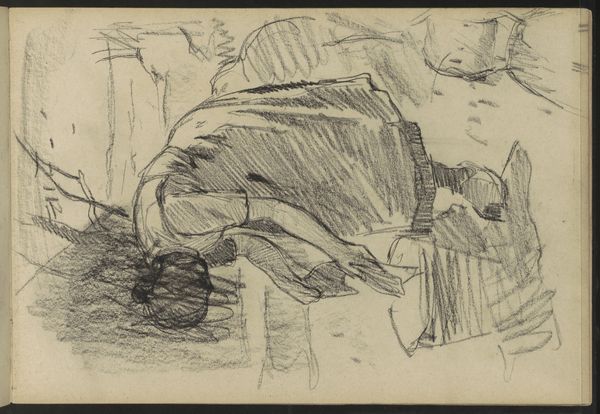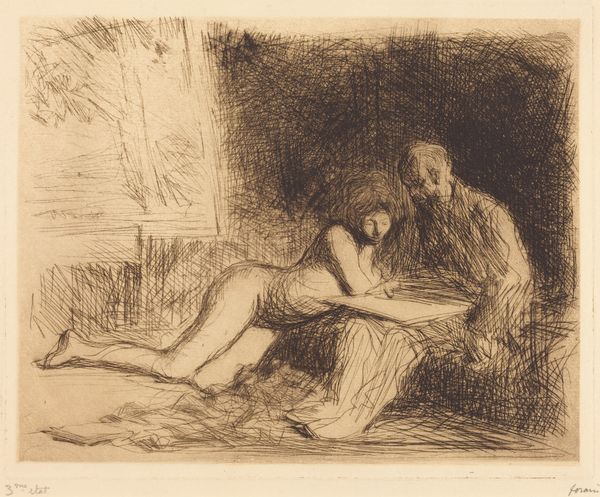
Copyright: Public Domain
Curator: Let’s turn our attention to "Zwei Arbeitsfrauen an einem Korb," a pencil drawing from 1906 by William Strang, currently housed in the Städel Museum. Editor: My immediate impression is of weariness, a kind of domestic entropy rendered through delicate lines. The drawing is suffused with a soft, sepia tone that contributes to this sense. Curator: Indeed. The scene captures two working women engaged in some kind of labour involving a large basket. Looking at the title and composition through a feminist lens, it reflects on the often unseen and undervalued contributions of women to the domestic sphere. The intimate depiction prompts questions about the power dynamics within labour itself. Editor: The lines certainly have an interesting dynamic – notice how they're more concentrated around the figures, creating a focal point while the background remains sketchier. This creates a wonderful contrast, pulling our eye toward their forms. But how much is the artist drawing on established compositional arrangements, and how much is he forging new ones? Curator: I would argue that Strang builds upon the tradition of genre painting while subtly critiquing it. Instead of romanticising the lives of working women, he presents them in a raw, unadorned manner. Consider, too, how their identities are somewhat obscured, faces downcast or partially hidden, almost anonymous. What does this say about representation and recognition of female labour in early 20th century society? Editor: While that is compelling, the work also feels so formally delicate that the figures, although rendered with what we could perceive to be imperfections, find a certain elegance. It creates, in my view, a sophisticated relationship between line, tone, and form. Curator: I agree. The very act of choosing these subjects, situating them centrally within the frame and immortalizing their work, elevates their status beyond the margins they usually inhabit. Editor: I had not fully considered the representational context you have elucidated. Now, stepping back, this delicate drawing certainly offers much more depth than I initially gathered from a mere surface viewing of the composition.
Comments
No comments
Be the first to comment and join the conversation on the ultimate creative platform.
